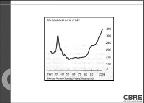We all read various publications on the market with any number of different titles. CB Richard Ellis May 2009 Americas Market View is titled: "Challenges Remain as Commercial Real Estate Sector Awaits Signs of Recovery".
Reading of articles of this type tells us only of negative market news. Such terms are used as:
* Market fundamentals continue to weaken for all asset classes
* A slowdown in investment sales remaining on the sidelines
* Vacancy rates for all product types continue to increase
* We are starting to see meaningful declines in rental rates
* A struggling economy will apply more pressure on already stressed property owners
This article will start with basic economics, present historic perspective, and finally, with what must be done to turn the corner.
Basic Economics
The largest component of the real estate market is single family housing. Close to 70% of all real estate assets in the United States are single family primary or secondary homes.
The single family market peaked in mid 2005 and has slipped since that time. The cause of the decline is that home owners used their homes like a checkbook. With underwriting standards being lax to none, home equity loans on top of first mortgage financing became the rage. New cars, boats, kitchens, and other luxuries were the result.
What has been stressed by such pundits as Case-Shiller is that home owners can afford no more than 3 times their gross income in terms of loan amount. Three times gross income would mean a loan that is 300% of a person's income.
Historical Perspective
The United States is structured based on an economy which can support income/taxes to carry federal, state, and local government spending. The Great Depression and WWII were defining moments. Following these events, those running our government and our citizens were cautious. Leverage was kept low and as shown in the following study, for over 30 years, the ratio of total US debt to income (GDP) hovered around 150% or half the Case-Shiller numbers.
Until 1980 the economy boomed. In 1980 inflation spiked and Paul Volker stepped in with a 20% prime rate and stop that spike. We leveled for a short while at a 225% ratio and then entered a loose money era which caused debts of all types and kinds to rise to levels that defied good judgment. By 2008, we reached debt of 350% of GDP. In 2009 we sit with real GDP of $11.375 trillion, total US debt of some $40 trillion and are faced with another $2 trillion+ in federal deficits.
Turning the Corner
Clearly, the corner can only be turned when we are able to start the pay down of debt. Like so many people, I attend programs, listen, and study.
In the real estate business, jobs are key. This article is written just before the May 2009 NEEP Economic Outlook so I carry a handicap. What must be kept in mind is that economic forecasts published in May 2007 said that "while expansion will be tested it is not expected to falter" and we would grow from 137.3 million jobs Q1 2007 to 139.1 millions jobs by Q4 2008.
As we look up today, we see only 135.7 millions jobs Q4 2008 and 132.4 millions jobs Q2 2009. In between, a lot of pain and suffering has occurred. We did not meet our projections in terms of job growth.
It is job growth that must be carefully monitored. Jobs create the capital to pay down debt. There is no other source. The reason that retail sales and GDP have fallen is the force of Case-Shiller ratios bringing recognition to current events. In simple terms, neither the country nor its citizens can support their dreams on over leveraged debt.
When economics result in a lower debt structure is the time when the turn can start to take place. Clearly, the start will not be in 2009, or even 2010.
Another pundit for whom I have great respect is professor Arthur Segal at Harvard Business School. His view is that the country is over leveraged by $10 to $25 trillion, which raised the concern of our becoming a debtor nation. My worry is that if we become a debtor nation, real estate as an industry can go through a long, flat period.
Finally, one of the greatest teachers of our generation is Warren Buffett. At this year's Berkshire Hathaway annual meeting, one of his memorable quotes was "leverage is what caused people real trouble in this world." While Warren Buffett knew that over 20 years ago (see page 537 of his book The Snowball), there are many who did not learn that lesson.
Webster Collins, MAI, CRE, FRICS is executive vice president/partner of the valuation and advisory group within CB Richard Ellis, Boston.
Tags:
Basic economics will dictate when the market for commercial real estate will recover
May 28, 2009 - Spotlights










.png)